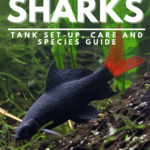The Red Tail shark (Epalzeorhynchos bicolor) is a striking fish that bring a splash of color to any aquarium! These fish have straightforward care requirements and have a long life expectancy when given the proper care.
But are Red-Tailed Black sharks super aggressive? How quickly do Red Tail sharks grow? And are Red Tail sharks endangered in the wild?
Read this guide to learn how to care for these enigmatic tropical freshwater fish and discover if you can breed them in your home aquarium!
What Is A Red Tail Shark?
The Red Tail shark is a popular aquarium fish that’s renowned for its aggressive nature and beauty.
Here’s a snapshot of the Red Tail shark’s profile!
Scientific Name
Epalzeorhynchos bicolor
Common Name (species)
Red Tail Shark, Red Tail Black Shark, Fire Tail Shark, and Red Tail Shark Minnow
Family
Cyprinidae
Origin
Thailand, specifically Bueng Boraphet
Diet
Omnivore
Care Level
Experienced aquarists
Lifespan
6 to 10 years
Temperament
Aggressive, territorial fish species
Tank Level
Primarily a bottom-dweller
Minimum Tank Size
55 gallons
Temperature Range
72° to 79° F
Water Hardness
10 – 15 dGH
pH Range
6.8 to 7.5
Filtration/Flow Rate
Moderate
Breeding
Egg layer
Compatibility
Can live in a community tank with fish that live in the upper areas of the water column
OK, for Planted Tanks?
Yes
Water type
Freshwater
History Of Red Tail Sharks
Once, there was a large population of Red Tail sharks in a place called Bueng Boraphet, which is the largest freshwater lake, small streams, and swamp in central Thailand.
Unfortunately, the numbers of this fish have declined so much in its native environment that the species is now classified as Critically Endangered on the IUCN Red List.
Physical Characteristics
Red Tail Shark Minnows are one of several species of freshwater aquarium sharks that are loved by aquarists for their striking colors and characteristic shark body shape.
Size and Coloration
Red Tail sharks are quite large fish, growing to a manageable size of between 4 and 6 inches long when fully grown.
These fish have the classic torpedo-like shark body shape and the upright dorsal fin of scary movie legends. However, one reason for the fish’s popularity is its striking color scheme.
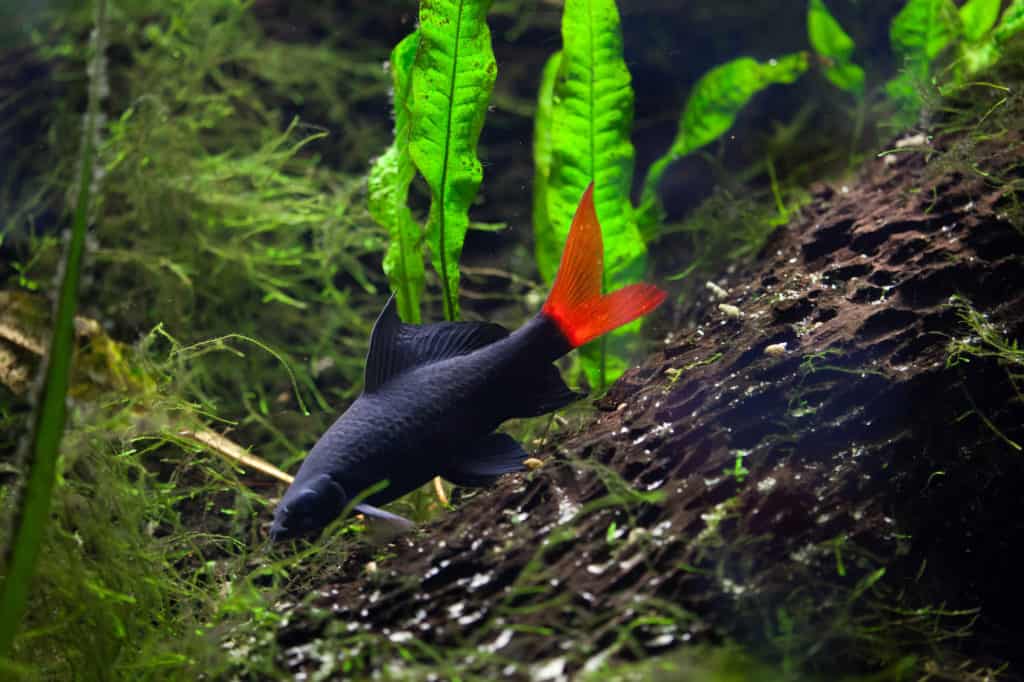
The Red Tail shark has a charcoal gray/black body extending to the end of the caudal peduncle, where the color suddenly changes, with no graduation, to a vibrant orange tail fin.
Average Lifespan
Red Tail sharks have a lifespan of between six and ten years in captivity when given the proper care and adequate tank size.
Activity Level and Behavior
Red Tail sharks are extremely active, semi-aggressive bottom-dwellers that spend much of their time exploring the bottom of the tank and foraging for food.
Compatibility and Tankmates
As mentioned earlier, Red-Tailed Black sharks are well known for their aggressive tendencies, but that doesn’t mean you can’t keep them in a community setting, provided you pick the right tank mates.
Bottom-dwellers, extremely curious, or aggressive fish are not a good fit for Red Tail sharks. Ideally, you want to choose fish that keep themselves to themselves and gravitate to the upper half of the tank.
Red Tail Sharks Options For Tank Mates
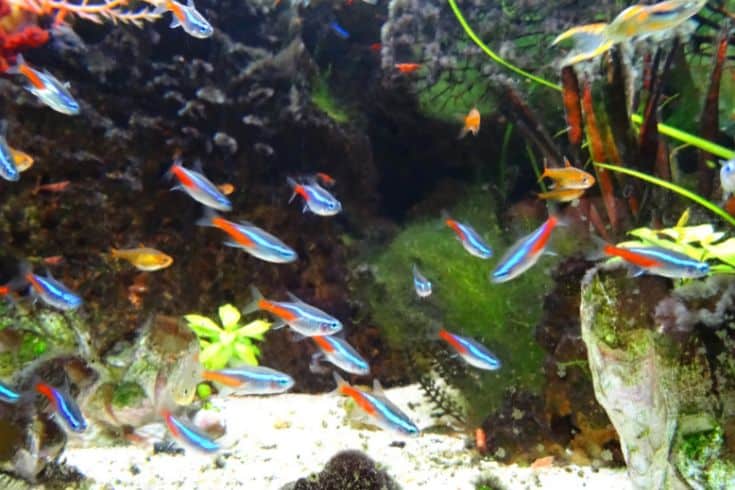
Now, you can never guarantee Red Tail shark behavior, but I’ve had success with the following species when kept in the same aquarium:
- Honey gourami
- Neon tetra
- Pearl gourami
- Angelfish
- Dwarf gourami
Of course, that list is not exhaustive, and many other nano fish species can do fine in a Red Tail shark tank.
Can Red Tail Sharks Live Together?
Although you can keep more than one Red Tail shark in the same tank, there is a risk that fights will break out because of the fish’s territorial nature.
You can somewhat mitigate that by using a large tank that allows the fish to enjoy plenty of space. It also works well to keep several sharks instead of just two. However, unless you have a massive tank, we recommend you keep one Red Tail shark and a group of suitable tank mates instead.
Do not keep fish that look similar to the Red Tail shark, such as the Rainbow shark, in the same tank since the fish’s red coloration seems to trigger aggression and territorial behavior.
Diet and Feeding Habits
What to Feed Your Red Tail Shark
In nature, Red Tail sharks are omnivores, feeding on insects, crustaceans, insect larvae, algae, and worms.
So, basically, these are not fussy fish, and they will happily eat a varied diet of commercial fish flakes and pellets combined with frozen foods, such as brine shrimp, bloodworms, and daphnia. In addition, some aquarists occasionally feed their Red Tail sharks fresh veggies, such as cucumber or zucchini, as a treat.
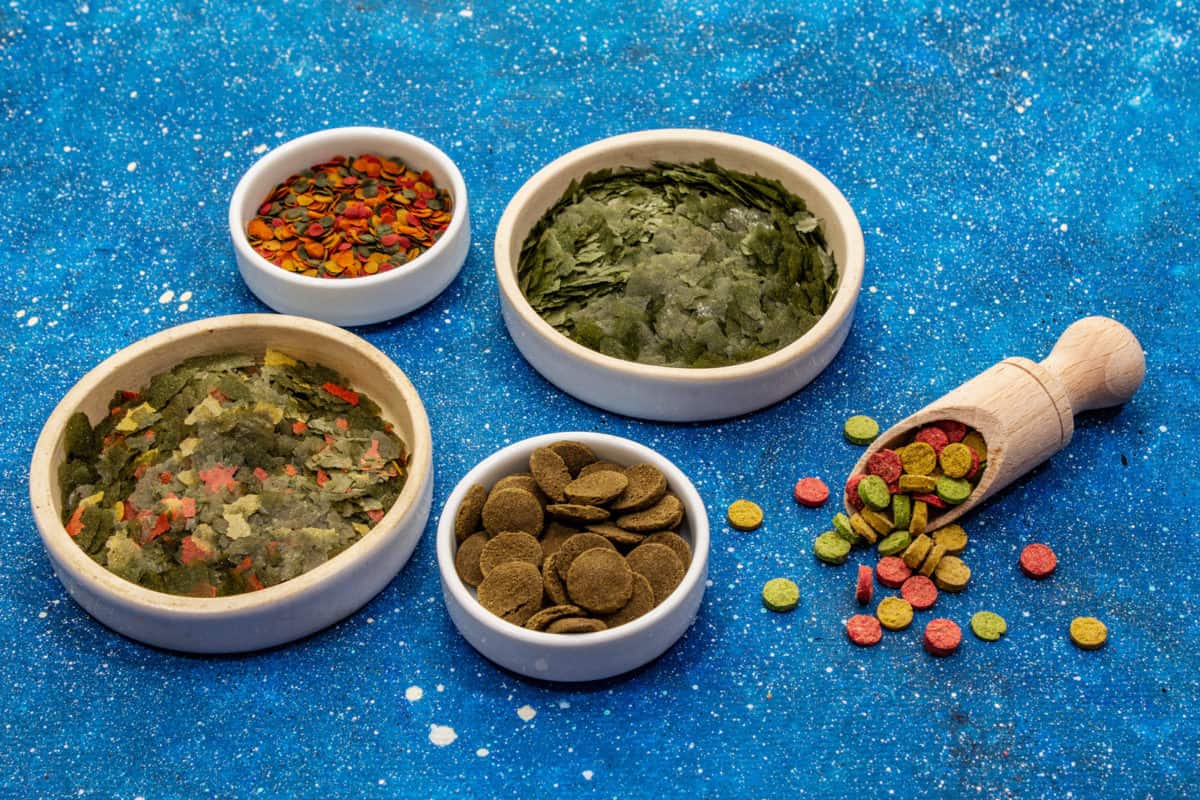
How Much and How Often to Feed
I recommend feeding your Red Tail shark twice daily in the morning and evening, offering the fish only what it will eat in a few minutes.
Tank Requirements
Tank Size
Red Tail sharks are an extremely active, territorial species that need a tank with plenty of swimming space, so a 55-gallon tank is the minimum size we recommend.
Long tanks are better than tall ones, as they provide more swimming space, as well as plenty of surface area for efficient gaseous exchange. I recommend a cover slide or a lid, as I’ve seen my Red Tail shark jump on more than one occasion!
Tank Setup
Substrate
As the Red Tail shark is primarily a bottom-dweller, I recommend using soft sand or fine gravel as a substrate.
Decoration
You can provide the fish with territories to claim as theirs by using caves, dense planting, rocky overhangs, and other suitable natural features.
Habitat Requirements
Fire Tail sharks can tolerate a range of water parameters provided you carry out regular water changes to keep the aquarium clean and healthy.
Filtration
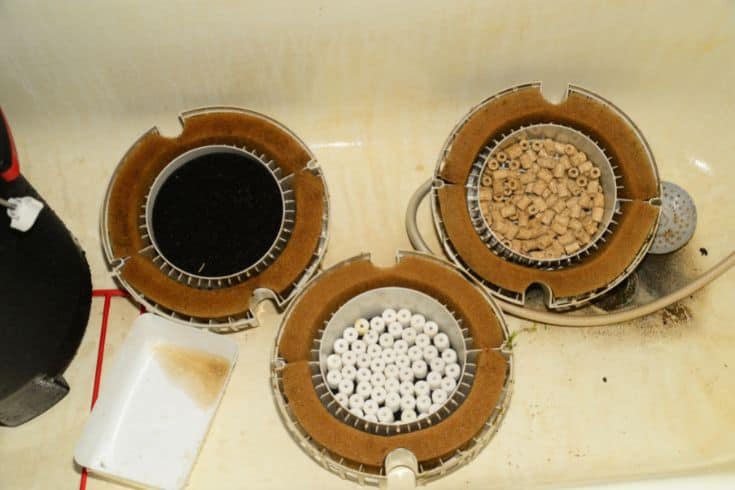
Red Tail Sharks live in the fast-flowing water of freshwater rivers and streams where the water is well-oxygenated.
In the captive environment, you can replicate those high-quality water conditions and well-oxygenated water by using an external canister filter and powerheads and perhaps using an air stone.
Ideal Water Parameters
Water Temperature
Red Tail Sharks are tropical fish that need a water temperature of 72° to 79° F.
Water Hardness and pH Range
The water should have a pH of between 6.5 and 7.5 and a water hardness of 10 to 15 dKH.
Lighting
Red Tail sharks need a clear day/night cycle so that they know when to eat, become active, and rest. Aside from that, the fish have no specific lighting needs, so choose lighting that suits your plants.
Tank Maintenance
Red Tail sharks need well-oxygenated, clean water for their optimum health and to keep them disease-free.
I recommend you carry out weekly partial water changes of around 25%. As part of your maintenance routine, use an aquarium vacuum cleaner to get deep down into the substrate and remove fish waste, uneaten fish food, and general detritus to prevent them from rotting and contaminating the water.
I also use an algae magnet to keep the viewing panes clear so that I can enjoy an unobstructed view of my fish.
Once every couple of weeks, wash the filter media in old tank water to get rid of sludge and keep water flowing freely through the media. You’ll need to replace the filter media periodically, as recommended by the manufacturer.
Setting Up the Aquarium
Before you start setting up your fish tank, gather together everything you’ll need.
- Wash all dust and dirt from the substrate.
- Place a few inches of your substrate in the aquarium.
- Add the heater and filter unit, but don’t switch them on just yet
- Fill the fish tank with dechlorinated tap water. I always pour the water over an upturned plate so as not to displace the substrate.
- You’ll need to add a pinch or two of fish food or a few drops of pure ammonia to the water to start the nitrogen cycle.
- Wash your decorations and arrange them in the tank.
- Before planting them, tidy up your aquarium plants by snipping off any dead leaves and broken stems. Leave plenty of space between each plant so that they have enough room to grow and spread.
- Turn on the filter and heater. For photosynthesis, living plants need eight to ten hours daily, so remember to set your aquarium timer accordingly.
The aquarium will take anywhere from two weeks and two months to cycle fully. Test the water every day until the ammonia and nitrites are zero and nitrates are around 20 ppm or less. At that stage, you can add a few small fish.
Carry on testing the water every day or two to ensure the ammonia and nitrite levels don’t start rising after the fish have been introduced. If the water remains clean, you can add more fish, being careful not to overcrowd your tank.
Health and Disease
Signs of Good Health

These eye-catching freshwater fish are lively, active creatures that spend most of their time exploring the bottom of the tank and chasing away any interlopers.
Red Flags
If you notice any of the following signs, that could indicate that some freshwater fish disease is affecting your fish.
- Poor appetite
- Inactivity
- Ulcers, swellings, reddened skin patches
- Rubbing against solid objects in the tank, the substrate, or the viewing panes
Common Health Issues and Treatment
Health Issue
Ich (White Spot Disease)
Symptoms or Causes
Ich is a very common disease that’s caused by an aquatic protozoan parasite.
Fish infected with Ich develop a sprinkling of tiny white spots on their fins, gill covers, and bodies. They also flash against the gravel and other solid objects in the aquarium.
Suggested Action
Raise the water temperature to 82o F for three days. Use an OTC White Spot Disease medication to treat the tank.
Health Issue
Flukes
Symptoms or Causes
Flukes is the term used to describe various types of external fish parasites. These macroparasites can often be seen with the naked eye attached to the fish’s skin or gills.
Suggested Action
Treat the fish tank with an OTC antiparasitic medication.
Health Issue
Fungal infections
Symptoms or Causes
White fluffy growths on the fish’s body, mouth, and head.
Suggested Action
Quarantine infected fish, and treat with an antifungal medication.
Health Issue
Bacterial infections
Symptoms or Causes
Sores and ulcers on the body and head, ragged, bloody fins.
Suggested Action
Treat the tank with OTC antibacterial treatment.
Breeding Red Tail Sharks
Red Tail sharks are incredibly difficult to breed in the home fish tank. In fact, there are no confirmed reports of the fish being successfully raised by amateur hobbyists.
The fish you find for sale in fish stores and online are generally raised by commercial breeders who use hormones to trigger spawning.
Availability
Red Tail sharks are readily available in most good fish and pet stores and from online aquarium stores.
Considering they are endangered, the Ruby shark is a surprisingly cheap fish on average, retailing at up to $10 per specimen.
FAQs

Here are the answers to some of your questions about caring for the beautiful Red Tail shark.
Q: Are Red Tail sharks feisty fish?
A: Red Tail sharks are highly territorial and can be aggressive, so you must carefully choose their tank mates.
Q: Are Red Tail sharks more aggressive than Rainbow sharks?
A: Red Tail sharks are more aggressive than Rainbow sharks, and for that reason, are not recommended for beginner aquarists. Generally, the Red Tail shark is a better choice for a community setup.
Q: Can Red Tail sharks live with goldfish?
A: You cannot keep goldfish and aquarium sharks together. Goldfish are coldwater fish, whereas Red Tail sharks are tropical creatures that need warm water. Therefore, the two species are not compatible.
Q: Can Red Tail sharks and Oscars live together?

A: Red Tail sharks are sufficiently aggressive to warn off Oscars, so provided you give your shark territory to defend, including caves, this bottom-dweller should be fine living with Oscars.
Final Thoughts
Did you enjoy our guide to the beautiful but aggressive Red Tail shark? If you did, please remember to share the article before you go!
Red Tail sharks are feisty, bottom-dwelling fish that can live in a community tank with species that inhabit the upper areas of the water column. These endangered fish are relatively easy to care for. However, we don’t recommend them for beginner aquarists because Red Tail sharks need a very large tank, and their aggressive nature can present challenges when it comes to choosing tank mates.
Do you keep tropical sharks? Tell us about your fish in the comments box below.
